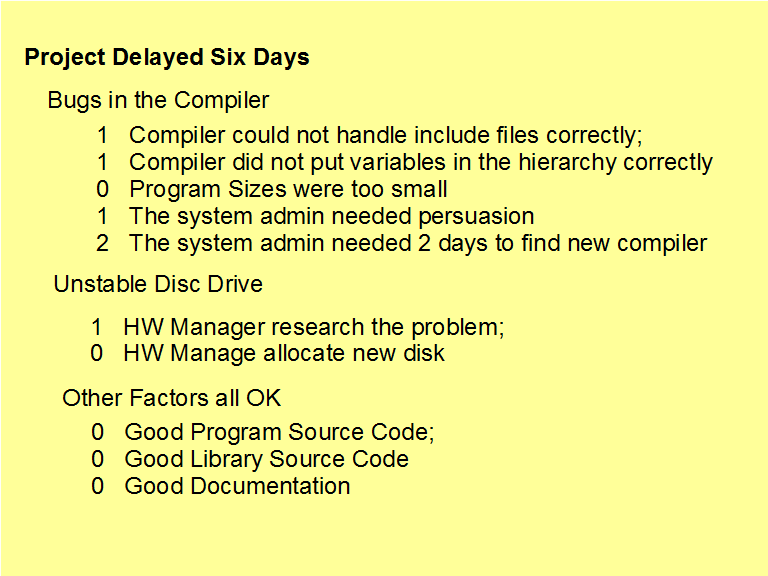Cause & Effect: Good; Fishbone: Bad
The old fashion block diagram for cause and effect reporting works much better than the popular fishbone. The fishbone requires slants, which contribute no information; the fishbone diagram requires the spacing of words and there is no benefit.
The block diagram for cause and effect can put the causes in order. The creation and maintenance are simple.
The block diagram for cause and effect can put the causes in order. The creation and maintenance are simple.
